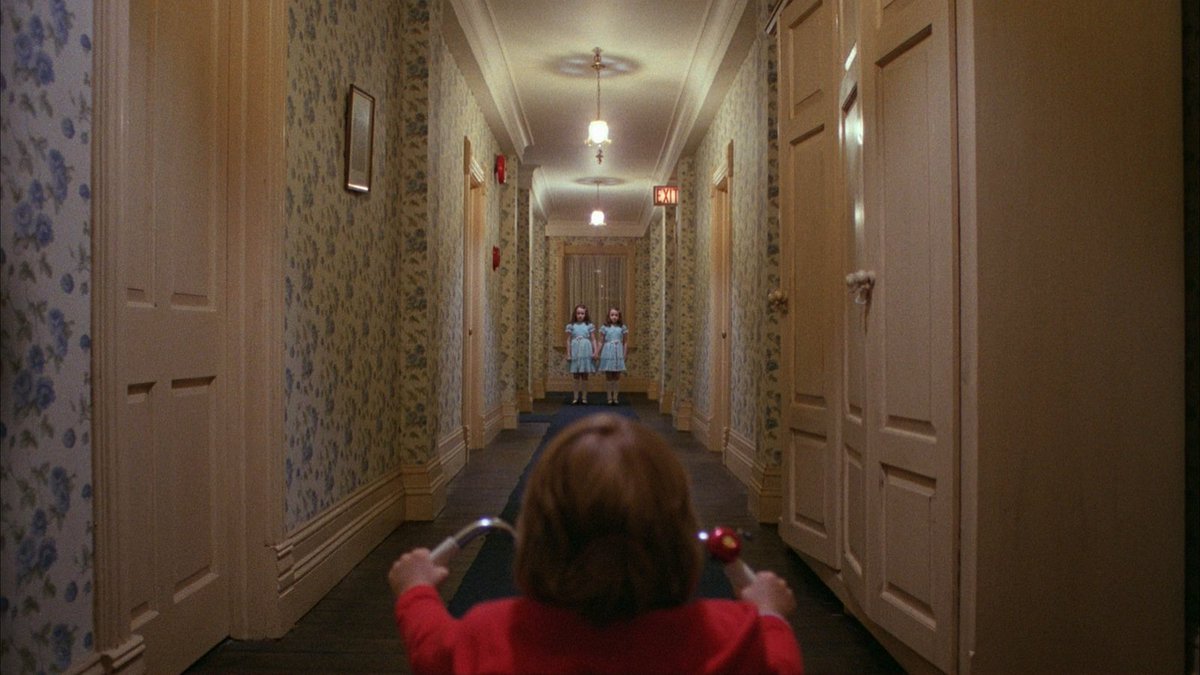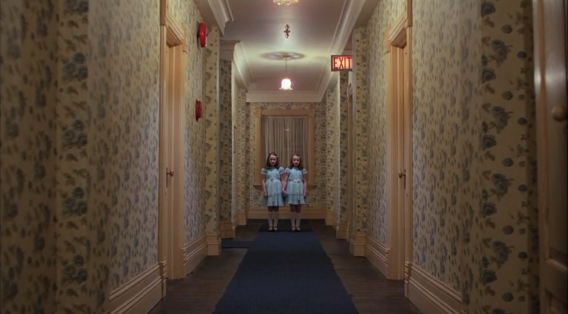
















this gives the scene a sense of claustrophobia as its leading Danny down the corridor.

makes the viewer feel as though they are following Danny through the corridors

Gives viewer a distorted view of reality as the human eye usually creates its own range of focus but Kubrick forces everything into focus

makes the audience feel trapped and distorted as the two are almost identical and dead center blocking the way through

Create a blog post demonstrating your understanding of the following cinematographic techniques and explain why you think Kubrick uses them in his films:
One-Point Perspective
Long Steadicam Takes
Deep Focus
Symmetrical Composition
Try to illustrate your post with images where you can.
Note that the examples don’t all need to come from “The Shining” alone